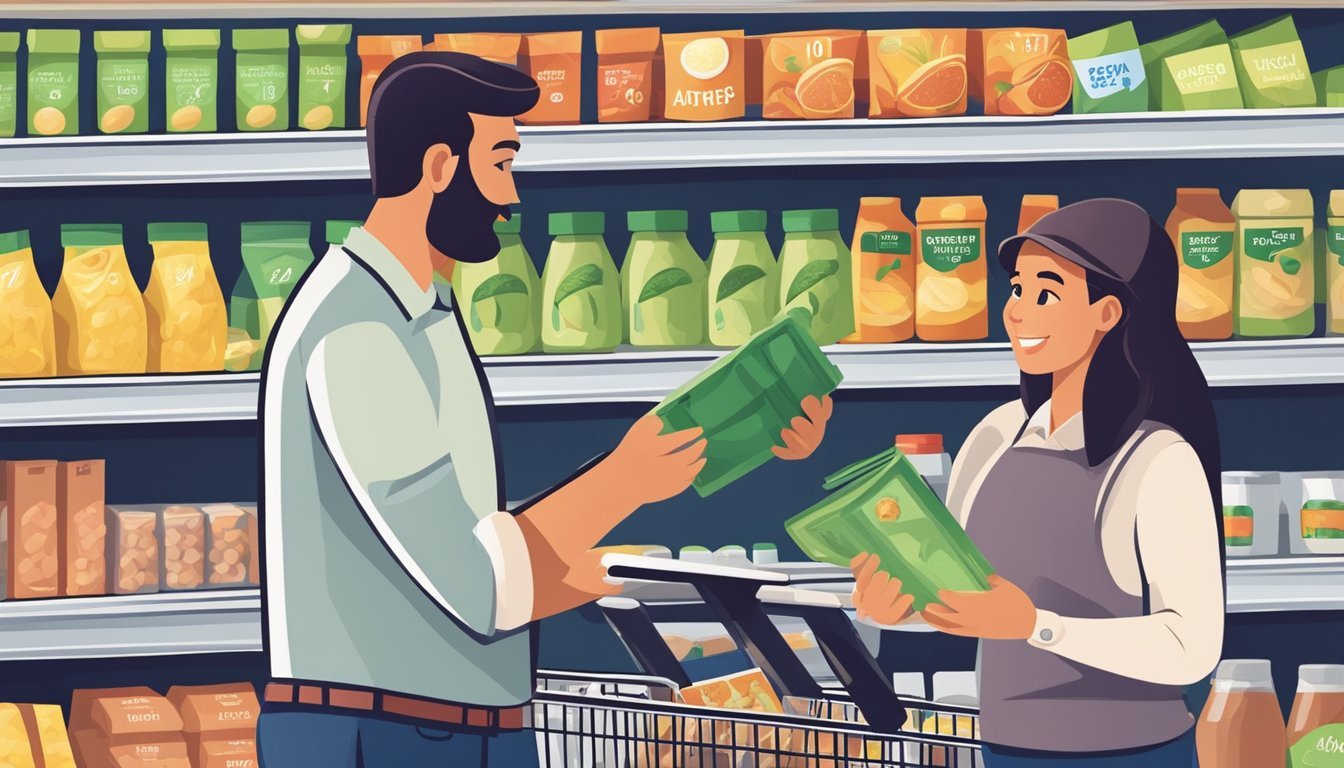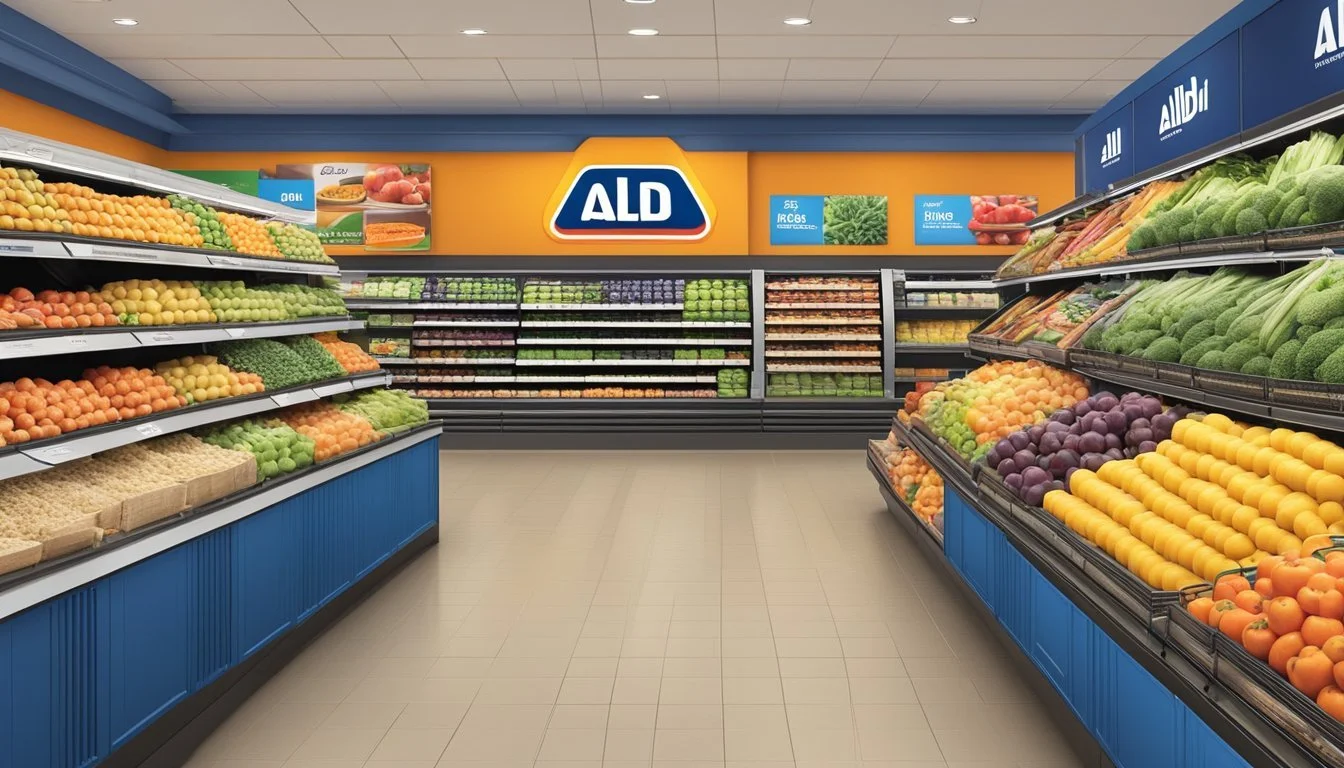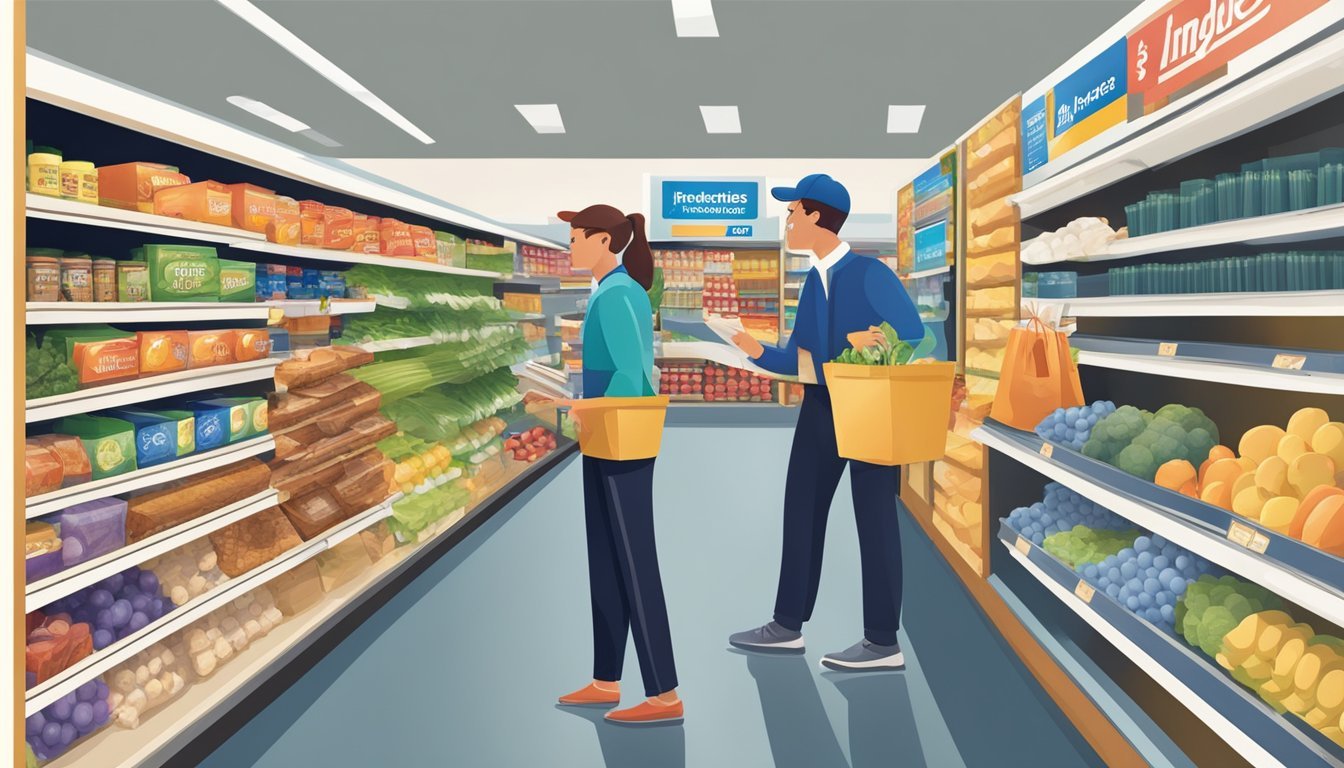Is Aldi Cheaper Than Ingles Markets?
A price comparison of two popular grocery chains
Aldi and Ingles Markets are both popular grocery store chains known for their competitive pricing. Many shoppers wonder which offers better savings on their weekly grocery bills.
Generally, Aldi tends to be cheaper than Ingles Markets for most grocery items. Aldi's no-frills approach, limited store hours, and focus on private-label products allow them to keep prices low. Their meat prices are often significantly lower than other supermarkets.
While Ingles Markets may have higher regular prices, they frequently offer sales and promotions that can make certain items more affordable. Shoppers looking to maximize savings should compare prices between the two stores and take advantage of special deals at both Aldi and Ingles Markets.
Overview of Aldi and Ingles Markets
Aldi and Ingles Markets are two prominent grocery retailers with distinct business models and regional presences. Both companies have carved out their own niches in the competitive supermarket industry.
History and Business Model
Aldi, founded in Germany in 1946, expanded to the United States in 1976. The company operates on a no-frills, discount model. Aldi stores are typically smaller than traditional supermarkets and carry a limited selection of private-label products. This approach allows Aldi to offer lower prices to customers.
Ingles Markets, established in 1963, is a regional supermarket chain based in the southeastern United States. The company focuses on providing a wide range of products, including both national brands and their own Laura Lynn private label. Ingles stores are generally larger than Aldi's and offer more services like pharmacies and fuel centers.
Store Locations and Presence
Aldi has rapidly expanded its presence in the United States. As of 2024, the company operates over 2,300 stores across 39 states. Aldi's growth strategy includes opening new locations in urban, suburban, and rural areas.
Ingles Markets maintains a more concentrated regional footprint. The chain operates approximately 200 stores across six southeastern states: North Carolina, South Carolina, Georgia, Tennessee, Alabama, and Virginia. Ingles focuses on serving communities in these areas with a mix of urban and rural locations.
Comparative Analysis of Grocery Pricing
Aldi and Ingles Markets employ distinct pricing strategies that impact the cost of common grocery items. Their approaches to pricing and product selection result in noticeable differences for shoppers.
Pricing Strategies
Aldi focuses on a no-frills approach, offering a limited selection of mostly private-label products. This allows them to keep costs down and pass savings to customers. Aldi's stores are smaller, with minimal staffing and a streamlined inventory.
Ingles Markets takes a different tack. They operate larger stores with a wider product range, including both name-brand and store-brand items. Ingles often uses promotional pricing and loyalty programs to attract customers.
Aldi's strategy typically results in lower everyday prices. Ingles competes by offering sales, coupons, and a broader selection.
Price Points for Common Items
A comparison of specific grocery staples reveals the pricing differences between Aldi and Ingles Markets:
Rice: Aldi often prices rice 10-15% lower than Ingles
Milk: Prices are similar, with Aldi occasionally edging out Ingles by a few cents
Eggs: Aldi typically offers lower prices on eggs, sometimes up to 20% less
Cheese: Aldi's private-label cheeses are usually priced 15-25% below similar options at Ingles
Produce: Prices vary by item and season, but Aldi tends to have lower prices on staples like bananas and apples
Meat prices can fluctuate, but Aldi generally maintains lower prices on chicken and ground beef. Ingles may offer competitive prices through sales or promotions.
Pantry staples like flour, beans, and butter are often cheaper at Aldi. However, Ingles' store-brand options can sometimes match Aldi's prices during promotions.
Product Selection and Variety
Aldi and Ingles Markets offer distinct approaches to product selection, impacting customer choice and pricing. Their strategies for name-brand versus store-brand items and specialty product offerings shape the shopping experience.
Name-Brand vs. Store Brand Offerings
Aldi emphasizes its private label products, with over 90% of items being store brands. These offerings typically come at lower prices compared to name-brand equivalents. Aldi's store brands, like Specially Selected and Friendly Farms, often match or exceed the quality of national brands.
Ingles Markets provides a more balanced mix of national brands and store-brand items. Shoppers find familiar names alongside Laura Lynn, Ingles' private label. This variety allows customers to choose between premium brands and more budget-friendly options.
The limited selection at Aldi streamlines shopping but may not suit all preferences. Ingles' broader range caters to diverse tastes and brand loyalties.
Organic and Specialty Products
Aldi's Simply Nature line offers organic and natural products at competitive prices. The selection, while growing, remains more limited than full-service grocers. Aldi rotates specialty items seasonally, introducing unique finds periodically.
Ingles Markets boasts a wider array of organic and specialty products. Their dedicated sections for natural and health foods provide more choices for health-conscious shoppers. Ingles also carries a broader range of international and gourmet items.
Aldi's approach focuses on essentials and rotating specialties, while Ingles maintains a consistent, extensive selection. This difference affects pricing, with Aldi often offering lower prices on comparable organic items.
Consumer Shopping Experience
Aldi and Ingles Markets offer distinct shopping experiences that cater to different consumer preferences. The layout, product selection, and additional services vary between these retailers, impacting convenience and overall value.
Shopping Convenience
Aldi stores are typically smaller and feature a straightforward layout. Products are displayed in their original shipping boxes, reducing restocking time and costs. Shoppers need to bring their own bags or purchase them at checkout. A quarter deposit is required for shopping carts, encouraging customers to return them.
Ingles Markets provides a more traditional supermarket experience. Stores are larger with wider aisles and a broader product selection. Shoppers can find name-brand items alongside store brands. Free paper or plastic bags are usually available at checkout, and shopping carts are freely accessible.
Aldi's limited product range can make shopping quicker, but may not suit customers seeking specific brands. Ingles offers more variety, potentially requiring more time to navigate but accommodating diverse preferences.
Additional Services and Amenities
Aldi focuses on core grocery items, limiting additional services to keep prices low. Most locations lack deli counters, bakeries, or pharmacies. The emphasis is on efficiency and cost-effectiveness.
Ingles Markets often include full-service deli departments, in-store bakeries, and pharmacies. Many locations feature fuel centers, offering gas rewards programs. Some stores have Starbucks cafes or other food service options.
Aldi's streamlined approach appeals to budget-conscious shoppers seeking quick trips. Ingles caters to those who prefer a one-stop shopping experience with more amenities. The choice between the two depends on individual priorities regarding convenience, service options, and price points.
Loyalty and Marketing Strategies
Aldi and Ingles Markets employ distinct approaches to attract and retain customers. Their strategies focus on providing value through various sales, discounts, and loyalty programs.
Sales and Discounts
Aldi offers consistent low prices on everyday items. They regularly feature "Aldi Finds" - limited-time special buys on unique products. These deals change weekly, encouraging frequent visits. Aldi doesn't use traditional coupons but occasionally provides digital coupons through their app.
Ingles Markets, in contrast, uses a more conventional sales approach. They offer weekly specials advertised in circulars and online. Ingles accepts manufacturer coupons and provides digital coupons through their website and app. This allows customers to stack savings on sale items.
Both stores aim to provide value, but Aldi focuses on everyday low prices while Ingles emphasizes periodic deep discounts.
Customer Loyalty Programs
Aldi does not operate a traditional loyalty program. Their strategy relies on consistently low prices to build customer loyalty. This approach aligns with their no-frills shopping experience.
Ingles Markets offers the Ingles Advantage Card. This free program provides:
Personalized coupons based on shopping history
Fuel rewards at Ingles Gas Express
Exclusive member-only discounts
The Ingles program incentivizes repeat visits and larger purchases. It also allows the store to gather data on customer preferences, enabling targeted marketing efforts.
Economic Factors Influencing Prices
Grocery prices are shaped by complex economic forces that impact retailers like Aldi and Ingles Markets. Supply chain dynamics, operational costs, and inflation play key roles in determining shelf prices for consumers.
Supply Chain and Operational Costs
Aldi maintains lower prices through an efficient supply chain model. The company focuses on private-label products, reducing costs associated with name brands. This strategy allows Aldi to negotiate directly with suppliers, cutting out middlemen.
Aldi's stores are smaller than traditional supermarkets, lowering real estate and utility expenses. The chain employs fewer staff members per store, further reducing labor costs. These operational efficiencies contribute to Aldi's ability to offer lower prices compared to competitors like Ingles Markets.
Ingles Markets operates larger stores with a wider product selection. This approach increases operational costs but provides customers with more choices. The company balances these expenses by offering a mix of national brands and private-label options.
The Impact of Inflation on Grocery Prices
Inflation has significantly affected grocery prices in recent years. By late 2023, food prices were 19% above pre-pandemic levels, prompting consumers to seek more affordable options.
Aldi's focus on efficiency and cost-cutting measures helps mitigate some inflationary pressures. The company can absorb some cost increases without drastically raising prices for customers.
Ingles Markets faces similar challenges but may have less flexibility in pricing due to higher operational costs. Both retailers must carefully balance price adjustments to remain competitive while maintaining profitability.
Consumer behavior shifts during inflationary periods, with many shoppers opting for lower-priced alternatives. This trend has benefited discount grocers like Aldi, as price-conscious customers prioritize savings over brand loyalty.
Comparative Shopping Strategies
Smart shopping tactics can help consumers get the most value when comparing Aldi and Ingles Markets. Strategic approaches allow families to maximize savings while meeting their grocery needs.
How to Maximize Savings with Both Retailers
Compare weekly circulars from Aldi and Ingles Markets to identify the best deals. Make a list of staples and stock up when prices are lowest at each store.
Take advantage of Ingles' loyalty program for additional discounts. Look for manager's specials and clearance items at both retailers.
Consider buying Aldi's budget-friendly store brands for pantry staples and basic ingredients. Purchase fresh produce and meats when they're on sale at either store.
Plan meals around promotional items to stretch your budget further. Buy in bulk for frequently used non-perishables when the unit price is favorable.
Tips for Managing the Grocery Bill
Create a weekly meal plan and shopping list to avoid impulse purchases. Stick to your list and avoid shopping when hungry.
Compare unit prices rather than package prices to find the best value. Look at top and bottom shelves for less expensive options.
Buy produce in season for lower prices. Consider frozen vegetables as a cost-effective alternative.
Use coupons strategically, but only for items you actually need. Don't be brand loyal - try store brands and generic alternatives.
Shop midweek when stores are less busy and may have better stock. Check clearance sections for marked-down items close to expiration.
The Impact of Location on Pricing
Grocery prices can vary significantly based on geographic location. Factors like local competition, cost of living, and regional supply chains influence how Aldi and Ingles Markets set their prices in different areas.
Regional Price Variations
Aldi and Ingles Markets adjust their pricing strategies to account for regional differences. In states like New York and California, where the cost of living is higher, both chains may have slightly elevated prices compared to other areas. Florida, with its diverse population and tourism industry, presents a unique market where pricing can fluctuate based on seasonal demand.
Aldi's streamlined operations allow for more consistent pricing across locations, but some variation still exists. Ingles Markets, being a regional chain primarily in the Southeast, may have more location-specific pricing due to local market conditions.
Urban areas often see higher prices due to increased operational costs and competition. Rural locations may have lower prices but could face supply chain challenges. The presence of other grocery chains in an area can also impact pricing, as both Aldi and Ingles Markets strive to remain competitive in each local market they serve.
Retail Competition and Market Position
Aldi and Ingles Markets face stiff competition in the grocery retail sector. Their market positions are influenced by pricing strategies, store formats, and regional presence.
Direct Competitors to Aldi and Ingles Markets
Walmart stands as a major competitor to both Aldi and Ingles Markets. With its vast network and low-price strategy, Walmart captures a significant market share. Kroger, another key player, offers a wide product range and competes on both price and quality.
Lidl, similar to Aldi in its discount format, has been expanding its U.S. presence. Regional chains like Publix in the Southeast also pose competition, especially to Ingles Markets.
Save-A-Lot targets budget-conscious shoppers, directly competing with Aldi's low-price model. WinCo Foods, known for its employee ownership and low prices, competes in select markets.
Comparison with Other Discount Stores
Aldi's efficient operations and limited SKU model allow for competitive pricing. A CNN report highlights that Aldi's house brands can be significantly cheaper than name brands. For example, Aldi's Millville Toaster Tarts cost $1.85 for a 12-pack, compared to $2.75 for Pop-Tarts.
Costco, while operating on a different model, attracts price-sensitive consumers with bulk purchases. Market Basket, known for low prices and no-frills stores, competes effectively in its operating regions.
Aldi holds a 2.1% share of the U.S. grocery retail market, outpacing some traditional chains. This positions Aldi as a formidable competitor in the discount grocery segment.










